
Unungkati Yantatja – one with the other
Primary School Resource Pack
This resource has been made possible with generous support from


Unungkati Yantatja – one with the other
Primary School Resource Pack
This resource has been made possible with generous support from
The Resource Pack will help your students understand the choreographic process Stephen Page used with Company dancers to create Unungkati Yantatja – one with the other. It introduces Sydney Dance Company history, key creatives, Company dancers, accompaniment, concepts, and inspirations behind the creation of the performance.
You’ll find a range of activities to lead with your students, including reading, writing, watching videos, and engaging in creative movement tasks. The pack also includes a glossary to help you easily understand and explain dance terms.
The pack contains a BEFORE THE SHOW section with ideas for research and discussion in the lead up to seeing Unungkati Yantatja –one with the other and an AFTER THE SHOW section with follow-up tasks to support learning in performance, composition and appreciation. The suggested activities in this Resource Pack are designed with stage 2 and 3 in mind, but can be further adapted by teachers to suit the requirements of Early Stage 1 and Stage 1 in NSW and the equivalent in other states.
Look out for the icons on each page to assist you through the range of activities.
KEY
Throughout this document, you will see the following icons:
Before the Show
The information and tasks included in this Resource Pack are designed to support the delivery of dance curriculum in schools. These elements link to the following criteria for Stages 2 and 3.

“Dance allows individuals and communities to shape their cultural identity and express their deepest feelings. These experiences continue to resonate throughout our lives, transforming our minds, bodies and souls.”
Rafael Bonachela

Sydney Dance Company is Australia’s leading contemporary dance company.
Sydney Dance Company was founded in 1969 by dancer Suzanne Musitz and was known as The Dance Company (NSW). In 1975-1976 the company was directed by Dutch choreographer Jaap Flier, before Australian choreographer Graeme Murphy became the Artistic Director in 1976.
In 1979, the name of the Company changed to Sydney Dance Company, and the Company was led by Graeme for thirty years.
Since 2009, the Company has been led by Spanish-born Artistic Director Rafael Bonachela. Each year, the Company collaborates with choreographers, designers, composers and musicians, and performs in Sydney and around Australia as well as internationally.
In addition to performances, Sydney Dance Company offers dance classes and workshops in person and online.
Sydney Dance Company is based in Sydney’s Walsh Bay Arts Precinct which is on the lands and waters of the Gadigal. We thank them for their ongoing care of this coastline and pay our respects to Elders past and present, and extend that respect to all First Nations people.
Contemporary dance is a style of dance that mixes ideas and movements from different dance forms like ballet, modern dance, and sometimes even hip hop. It doesn’t always follow strict rules or set steps, which means dancers have the freedom to move in many different ways.
While there are specific contemporary dance techniques, such as Cunningham or Graham, many choreographers are not confined to a fixed movement vocabulary.
The word contemporary means “happening now” so contemporary dance is always changing and reflects what is happening in the world today. It’s about exploring movement, expressing emotions, telling stories, and being creative in the moment.

Rafael Bonachela was born in Barcelona where he began his early dance training before moving to London. In 1992, he joined the legendary Rambert Dance Company.
He remained with Rambert as a dancer and Associate Choreographer until 2006, when he set up the Bonachela Dance Company.
As a choreographer, Rafael has created works for companies all over the world, including Dresden Frankfurt Dance Company (Germany), Candoco (UK), George Piper Dancers (UK) and Contemporanea de Cuba (Cuba).
In 2009, Rafael was appointed as Sydney Dance Company Artistic Director, making headlines around the world. Through his time as Artistic Director, Rafael has had Australian and international choreographers create works for the Company. Rafael has also worked with artists in popular culture such as Kylie Minogue, Tina Turner, Sarah Blasko and Katie Noonan as well as fashion designers such as Bianca Spender, Dion Lee and Toni Maticevski. These collaborations are a source of inspiration for Rafael.

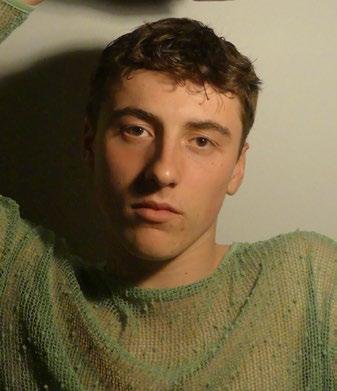







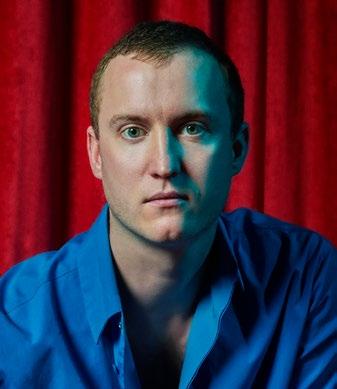














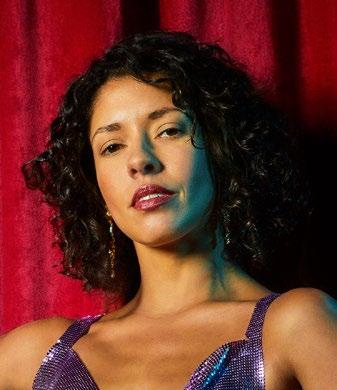

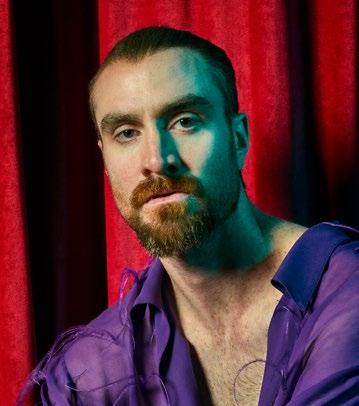


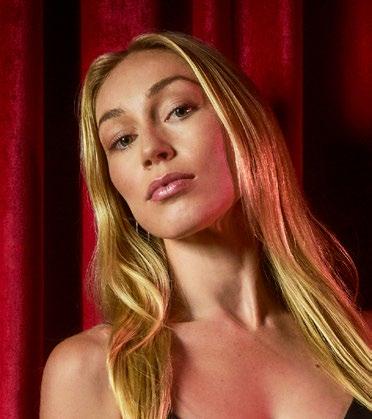





Unungkati Yantatja – one with the other is a collaboration between esteemed choreographer Stephen Page and acclaimed composer and Yidaki player William Barton.
Stephen’s choreography brings William’s music to life, weaving connections to land, sea, sky, and living creatures, while grounding us in the spirit of creation.
Performed live with the award-winning Omega Ensemble, who commissioned the score, this work is a tribute to the power of breath—uniting us with Country, with each other, and with the enduring rhythm of life.
Watch this video of Unungkati Yantatja - one with the other and venture behind-the-scenes as Stephen and the dancers create the work


Unungkati Yantatja, meaning “One With The Other” in the Kalkadunga language spoken by William Barton’s father, was chosen as the title by composer and yidaki (didgeridoo) player William Barton in collaboration with choreographer Stephen Page. The title grew from a conversation about William’s songlines and the music he created for the yidaki. This music was further developed with Omega Ensemble and features the bass clarinet and string instruments. Both the yidaki and clarinet player use a technique called circular breathing, which allows them to produce a continuous sound without pause. This endless breath can be compared to the wind.
In the storytelling, the wind and the yidaki (stick) merge as two powerful forces that, one with the other, ignite the spark of fire.
A yidaki, also known as a didgeridoo, is a traditional Aboriginal instrument originating from northern parts of Australia and has been culturally shared and traded across First Nations Countries. Its sound is considered a form of speaking, expressing unique languages and meaning across different communities.
Traditionally, a yidaki is crafted from eucalyptus branches naturally hollowed by termites. The exterior is often decorated with ochre or patterned designs, with styles and motifs varying across First Nations Countries. When played, it produces a deep, buzzing sound. Players use a special skill called circular breathing, which means they can keep the sound going without stopping to take a breath.
There are many traditional playing techniques, and today the yidaki’s sound can also be adapted into contemporary and musical styles. The yidaki is not just for making music; it holds significance in ceremonies, storytelling, and cultural traditions.
Aboriginal and Torres Strait Islander Storytelling Aboriginal and Torres Strait Islander storytelling is an important tradition for First Nations Australians. Stories are shared through speaking, songs, dance, and art, and they pass down knowledge, history, and beliefs. Many stories come from songlines of the natural world, which explains how animals, people and culture were created. Storytelling teaches lessons to younger generations, keeps culture and traditions strong, builds identity and connection to the land and sea, and supports pride and wellbeing in First Nations cultures.
Kalkadunga Country, also known as Kalkatungu or Kalkadoon Country, refers to the traditional lands of the Kalkadoon Aboriginal people, located in the Mount Isa region of Queensland, Australia. It encompasses a vast area, stretching west from Cloncurry to Mount Isa, south to Duchess and the Selwyn Range, and north to Glenroy. The Kalkadoon people have a rich cultural history and are known for their strong connection to their land and their resistance against early colonial settlement.

Introducing the music composer – William Barton
William Barton, Australia’s leading yidaki player, is also a renowned composer, instrumentalist and vocalist. Taught by his uncle, Kalkadunga Elder Arthur Peterson, William began performing at a young age with traditional dance groups, fusion bands and orchestras.
His career spans collaborations with the London, Berlin and Bremer Philharmonics, historic performances at Westminster Abbey, Anzac Cove and the Beijing Olympics, and five albums with ABC Classics, including Heartland (2022) with Veronique Serret and the words of his mother, Aunty Delmae Barton.
William joins Sydney Dance Company for Unungkati Yantatja – one with the other in Continuum, a collaboration with choreographer Stephen Page and the award-winning Omega Ensemble, who perform William’s moving commissioned score live on stage.
A note from William Barton about the musical score
“The awakening moments of the dawning of time, sunlight reflective upon the great southern land. The wind gently travels across the earth and rises to the sky, sharing the journey with the eagleinhaling and exhaling with our first breaths of life. From the distance the rivers of our bloodlines of mother country become ever so present, we realise from the eagles view we are connected as one humanity.
A dedication to the memory of one’s breath, the first breath we take as we are born into this world, and the last taken. Breath is the rhythm we breathe as our heartbeat pulsates throughout our body - our breath is our connection to one another.
Each musician becomes the breath for one another - exchanging energy. As our earthly horizon arcs to a peak in the sky we breathewe breathe for the memory - we breathe for our loved ones.

An interpretation of the bushland coming to life as the earth shimmers a new day born - each instrument becomes the elements of nature - a rhythmical flow of life, we breathe within, together as a symbol of unity - the importance of language passed on to generation after generation
The dust spirits dance upon rocky outcrops, jagged and sharp pointed spinifex grass whistle as the wind travels.
The opening section is reflective, the voice forms a pathway with each musician to cross paths creating energy to breathe for others.
As we travel the life’s circle of light we embrace each other’s breath to a new memory born.
A silhouette of the rocky outcrops grow closer to the stars as the glow of the moon shines on the wings of the eagle.
All instruments morph into timelessness a place of rebirth renewal hope and our breath.
As the canvas of our landscape paints the night sky we find ourselves awakening to the new day born.
To the end May we share the memory of this breathe together.”
- William Barton (January 2022)
Omega Ensemble champions extraordinary musical talent through high-energy and impactful performance.
With a commitment to cherish foundational classical music repertoire, the Ensemble also proudly stands at the forefront of new musical expression, collaborating with leading Australian and international composers and placing groundbreaking world premiere music at the centre of its projects.
The ensemble has received multiple accolades for its performances and commissions including Performance of the Year at the 2023 APRA AMCOS Art Music Awards, and has been a finalist in the Limelight Artist of the Year Awards on multiple occasions.
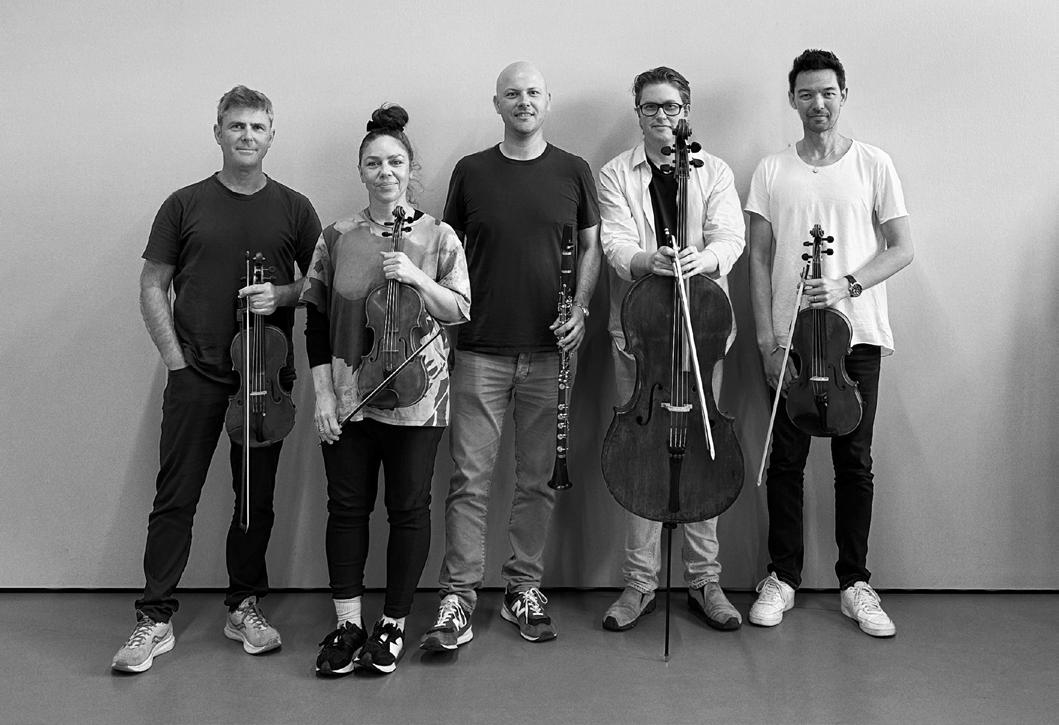
Introducing the choreographer - Stephen Page
Born in Brisbane, Stephen is a Nunukal/Ngugi man of the Quandamooka Peoples and a Munaldjali man of the Yugambeh Nation, South East Queensland.
From 1991–2023, he was Artistic Director of Bangarra Dance Theatre, creating over 27 landmark works that have shaped Australian performing arts. Stephen continues to expand First Peoples storytelling through Bangarra, wider arts communities, and collaborations in film and television.
His many honours include an Honorary Doctorate of Creative Arts (UTS, 2015), the NAIDOC Lifetime Achievement Award (2016), JC Williamson Award (2016), Australia Council Dance Award (2017), Officer of the Order of Australia (2017), the Red Ochre Award (2022), and PAC Australia’s Wendy Blacklock Industry Legend Award (2022).
About the choreography
“I was invited by Rafael Bonachela to choreograph a work for this triple bill, after he had heard and fell in love with the score. He had connected with an initial 20 minute recording of William Barton and Omega Ensemble’s Breath –the gift of life and felt that it was a composition that needed to be explored through dance. After 30 years with Bangarra, I was planning on a small break from dance to build projects in different creative fields, but Sydney Dance Company was where I started my career as a dancer and that circularity felt special to me.
Developing Unugkati Yantatja – one with the other has been a different process for me. Usually, I start with a blank canvas, creating my work from there. We’d start with stories – traditional and contemporary, then build the choreography and score around it. With this project I was brought in when they had some of the ingredients – the score was already set. This was an interesting challenge, and I started working to find my way into the story - what was William, his creative spirit, feeling during the development of the composition?

William talked about his fascination with circular breathing, and how the initial composition was developed with David Rowden, Artistic Director of Omega Ensemble playing two ancient wood instruments – the yidaki and clarinet that both have this practice. We talked about how sacred breath is also such a human necessity. This drove the development of the work for me.
We aligned on the genesis of the story, the universality of breath – the inhale and exhale of breath, and the breath in all things whether its humans, plants, animals, sky, water. This felt like a truth in all cultures, but also so linked to the kinship systems in First Nations storytelling.
I’ve found a really incredible connection with the Sydney Dance Company dancers during the development of this work. There are few companies, globally, that work at such a high standard technically. They have such a unique creative spirit and connect as a clan so well. I really enjoyed bringing the knowledge I have of dance, my distinctive language and William’s story that I’ve been entrusted with, to make something important, with the physical artistry of these incredibly talented dancers.
It was wonderful that I could call upon my creator clan, who I’ve worked with for many years: Jacob Nash for set design, Jennifer Irwin for costume design, and Damian Cooper for
lighting. They know the contemporary spirit, and they’re exceptionally creative and good at what they do. It’s great to have them work with me again.
I’m thankful for William who invited me to take care of his composition and to lead this story creatively and to Rafael to invite me to work with the company again.
I hope you enjoy this special creation, Nyanyabuh, Stephen Page

Putting on a dance performance takes a lot of teamwork. What you see on-stage in Unungkati Yantatja – one with the other is the result of many people working together both before and during the show. From planning and rehearsing in the studio to performing under the lights, every step is important in creating the final performance that the audience gets to enjoy.

Choreographic creation and pre-production
This is the planning stage, where ideas are developed, choreography and music are created, and the team works together to design everything before it goes on stage.
• Artistic Director – Rafael Bonachela Decides on the overall vision to guide the Company’s performances.
• Guest Choreographer – Stephen Page Creates the dance movements and uses choreography to tell the story.
• Composer – William Barton Writes original music that sets the mood and supports the choreography.
• Musicians – Omega Ensemble Perform the music as a group, creating the sound and atmosphere for the show.
• Lighting Designer – Damien Cooper Plans how lighting will be used to highlight the dancers and create the right mood.
• Set Designer – Jacob Nash Designs the stage environment to bring the world of the performance to life.
• Costume Designer – Jennifer Irwin Designs costumes that look great on stage and allow the dancers to move freely.
• Rehearsal Directors – Richard Cilli and Mia Thompson Leads rehearsals and helps the dancers perform their best every time.
• Technical Director – Guy Harding
Makes sure all the technical elements like lighting, sound, and staging work smoothly.
• Head of Wardrobe – Mary-Ellen Baxter Creates and looks after costumes so they’re ready for every performance.
This is when all the planning pays off. The dancers, musicians, and production crew work together to bring the show to life in front of an audience.
• The Company Dancers
Perform the choreography, telling the story through movement and expression.
• Musicians – William Barton and Omega Ensemble
Play the music live, adding energy and atmosphere to the performance.
• Stage Manager – Simon Turner Calls the show from backstage, giving cues for lights, sound, set changes, and entrances.
• Lighting Crew
Operate the lighting design, making sure the mood and focus are right for each moment.
• Stage Crew Move sets and props smoothly, so the show runs without interruptions.
• Wardrobe Team
Help with costume changes, fix costumes if needed, and keep them ready for every performance.
• Sound Operators
Run the sound cues and make sure the audience hears everything clearly.
A dance performance doesn’t just happen on its own, it takes the hard work of many people both on stage and behind the scenes. From the first rehearsal to the final bow, every role is important. Together, the team makes sure that a work like Unungkati Yantatja – one with the other is more than just a performance — it’s a powerful experience shared between the dancers, musicians, and the audience.
Theatre etiquette – how to be a great audience member
Going to the theatre is a special experience that everyone shares together. To make it enjoyable for yourself, your school peers, and the performers, follow these important guidelines:
• Stay seated
Sit comfortably in your seat and remain there throughout the performance. Moving around can distract others. If you must leave (for an emergency), wait for a teacher and theatre staff to help.
• Respect the performers
The dancers and musicians are working hard to tell a story. By staying focused on the stage, you show them respect and make it easier to follow along with the performance.
• Listen and watch closely
Keep quiet, avoid whispering and don’t use any electronic devices during the show. Talking or making noise disturbs the people around you, and you might miss the most exciting or beautiful parts of the performance.
• Applaud at the end
When the performance finishes, clap your hands to show your appreciation. This is your way of saying “thank you” to the performers. They will usually bow at the end in response to your applause.
Remember: Live theatre is a shared experience. The way you behave as an audience member helps make the performance enjoyable for everyone!

When we dance, it’s important that everyone feels safe, supported, and free to explore new movements. A safe creative space helps us try new ideas without worrying about being judged. It also makes sure we can work together as a team and enjoy the process of creating dance
At Sydney Dance Company, we believe that key values help us build this positive space:
• Safety – looking after ourselves and others while moving.
• Respect – listening to each other’s ideas, giving everyone a turn, and treating people the way we want to be treated.
• Commitment – trying our best, even when something feels new or challenging.
• Kindness – encouraging one another and using positive words.
• Communication – sharing ideas, asking questions, and giving helpful feedback.
Our Class Values
Discussion questions:
1. What values do you think are important when we are creating and moving together?
2. Are there any values you would add or change from the list: Safety, Respect, Commitment, Kindness, Communication?
3. Can you think of other values we might need for our class?
Aim: To explore new and creative ways of moving.
Outcome:
• Build confidence in improvisation.
• Generate and explore new movement ideas.
• Express themselves through dance.
• Reflect on their experiences.
Helpful Hint for Students
Contemporary dance has no rules about what’s “right” or “wrong.”
Every movement you make is unique. Have fun, be playful, and see what your body can do!
Teacher Note: Guiding Improvisation
• Allow at least 2 minutes for students to explore each instruction.
• Focus on one task at a timethis can be spread across different lessons.
• Encourage reflection after movement: What did you discover? Which shapes or movements felt fun or unusual?
Improvisation Activity 1: Creating Shapes
Use Sydney Dance Company’s Spotify improvisation playlist for music support. Click here to listen to Spotify playlist.
1. Warm-up:
Move your body in any way that matches the music. Try big, small, smooth, or sharp movements.
2. Round Shapes:
a. Use different body parts (arms, hips, head, knees) to make round movements.
b. Try it in slow motion—how does that change the feeling?
3. Square Shapes:
a. Create square or box-like movements with your body.
b. Try moving in fast-forward speed—what happens to your shapes?
4. Leading with Body Parts:
a. Let your elbow lead you around the room.
b. Rewind back to where you started using the same pathway.
c. Let your big toe lead you around the room.
5. Combine Movement:
a. Try moving your big toe and your ear at the same time.
b. What new shapes or patterns appear?
Teachers: you can incorporate a variety of different body parts into the task to keep it interesting for your students.

Improvisation Activity 2:
Creating movements - Inspired by circular patterns and ideas
Warm-Up Exploration: Body Circles
• How many different circles can you make with your body?
» Try using different body parts: your right arm, hips, spine, head, knees, or even your fingers and toes.
» Explore different sizes: small, medium, or large circles.
» Experiment with pathways: draw your circle in the air, on the floor, or even around your own body.
Dynamic Challenge:
• Can you make a tiny, sharp circle with your wrist?
• Can you make a slow, sweeping circle with your head or arm?
• Try linking fast and slow circles together— what does that look and feel like?
As a group, brainstorm objects we see every day that are circular.
Examples: a clock, a coin, a pizza, a plate, the sun, a ring.
• Thinking creatively about how you can interpret the circular object’s movement through your own body, show what the object might do:
» A clock ticking
» A pizza being spun in the air
» A coin rolling across the floor
» The sun rising and setting in a circular path
• Can you do this movement again but using a different body part?
• Can you do this movement again but using a different level or direction?
Extension: Work in pairs—one person makes the circle shape, the other creates a movement response to it.
Think about how circular objects move in the world.
Examples: a spinning wheel, a bouncing ball, ripples in water, the moon orbiting Earth.
• Brainstorm different circular objects and the way they move.
• Use your whole body to represent one of these moving circles.
• Experiment with levels: low (floor), medium (kneeling or crouching), and high (standing, jumping).
• Try doing your circular object movement while moving in a circle that takes you around the space. How does it change the feeling?
Challenge: Can you create a short sequence that links 3 different types of circular movement together?
Reflection & Sharing
After improvising, gather as a class:
• Which circular movement felt the most natural for you?
• Which one felt surprising or new?
• How did changing the tempo, size, or level of your circle change the meaning of the movement?

Aim: Students will be guided through a creative task inspired by the themes of Unungkati Yantatja – one with the other. This task encourages students to imagine, explore, and create movement that reflects natural forces, building both creativity and confidence in dance.
Outcome:
• Develop and refine movement skills
• Generate original movement ideas
• Express ideas and emotions through dance
• Collaborate and express themselves creatively
• Reflect on their experiences
Teaching Note
A glossary of key dance terms is provided on pages 28 - 29 of this resource pack to support clear explanation and student understanding.

“The continuum of breath is like the wind.” — Stephen Page, Unungkati Yantatja – one with the other Choreographer
Students will explore different qualities of wind through creative movement. This allows them to investigate force, direction, and flow using their bodies.

This task can be done on the spot or moving around the room. Students explore movement qualities inspired by wind:
• Leaf in the wind
» Imagine a leaf being carried by the breeze. Move your whole body, or just one body part (e.g., hand, arm, head).
» Experiment using different dynamics:
• Slow, graceful, falling
• Spiraling and swirling
• Tumbling quickly
• Wind currents
» Use your torso and arms to draw shapes and patterns in the air.
» Explore:
• Swirling forces
• Rushing gusts
• Gentle breezes
• Strong wind vs. Gentle breeze
» Contrast quick, forceful movements with slow, flowing ones.
» Explore how your body responds differently to each.
Aim: Using wind as the stimulus, create a short movement phrase inspired by your creative task.
What is a phrase?
A movement phrase is a short sequence of steps (about 1 - 2 minutes long). Phrases are often named to help dancers remember them.
Composition options:
Individual phrase
• Task: Create a short sequence (4 - 6 movements) that represents different aspects of wind. You might use a different body part for each movement, or use your whole body:
» Gentle breeze
» Gusts
» Whirling
» Stillness
» Sudden bursts
• Focus: Explore how your body can show changes in speed, energy, and direction. Think about lightness vs. heaviness, flowing vs. sharp qualities.
• Challenge: Use at least two body levels (low, medium, high) and show a clear change in dynamic.
• Task: With a partner, share your individual wind phrases. Explore how your movements can interact if you do your individual phrases at the same time:
» Respond to each other’s phrases (echo, mirror, contrast).
» Build on each other’s ideas (one starts a gust, the other continues it).
» Explore push/pull, resistance, or following pathways as if “carried by the same wind.”
• Focus: Connection and communication. Use eye contact, shared space, and body awareness.
• Challenge: Incorporate at least one moment of contact or near-contact where the “wind” seems to travel between you.
Group phrase
• Task: Bring your duet ideas into a larger group piece. Use choreographic tools to structure and layer your movement:
» Repetition: Repeat a gesture or movement to create rhythm.
» Canon: Pass a movement through the group as if the wind is travelling across the space.
» Unison: Move together to show a strong gust or storm.
» Space/Time/Energy: Experiment with formations (circle, line, scattered), vary tempo (slow-motion breeze vs. fast gusts), and shift dynamics (smooth, sharp, swirling).
• Focus: Collaboration and composition. Ensure the piece shows a clear beginning, middle, and end (e.g., stillness → build up → storm → calm).
• Challenge: Include at least one moment where the whole group moves in unison, one moment in canon, and one moment where everyone is doing something different (contrasting energies in space).
Watch, think, respond!
Aim: Students will reflect on their personal experience of watching Unungkati Yantatja – one with the other and explore how dance elements (such as space, dynamics, relationships, and timing) and performance settings (including staging, lighting, costume, and music) contribute to the overall impact of a live dance performance.
Outcome: Students demonstrate an ability to communicate their individual insights and interpretations of Unungkati Yantatja – one with the other through written, spoken, visual, or creative responses. Students describe and analyse how different aspects of dance and performance design shape the audience’s experience, showing an emerging appreciation of live dance performance.
After students complete their table:
• Pair or group students so they can share their responses.
• Each student takes turns explaining their ideas to their peers.
• Encourage students to ask clarifying questions (e.g. “Why did that movement stand out to you?” or “How did the music make you feel that way?”).
• This peer discussion helps deepen understanding and allows students to compare perspectives on the same performance.
After watching Sydney Dance Company’s Unungkati Yantatja – one with the other, choreographed by Steven Page, respond to the questions in the table below.
You may choose to:
• Write your answers in sentences or key words
• Draw your ideas using pictures, diagrams, or symbols
• Speak your answers in a group or class discussion before recording your ideas
Your responses should reflect what you noticed, felt, and understood while watching the performance.
Appreciation Task Table – Unungkati Yantatja – one with the other
Focus
First Impressions
Movement
What was the first thing you noticed? How did it make you feel?
What kinds of movements, shapes, or patterns did you see?
Relationships
Design Elements
How did the dancers move with or around each other?
Feelings / Ideas
What did you notice about costumes, set, lights, or music?
What message, idea, or story do you think the dance was sharing?
Favorite Moment
What was your favourite part of the performance, and why?
Your Response (write or draw)
A creative response is another way for you to share how the performance made you feel and what you thought about it. Instead of only using words, you can express your ideas and emotions in a creative way that feels natural to you.
You will be creating your response to the performance Unungkati Yantatja – one with the other. Think about what stood out to you: the movements, the music, the costumes, the stories being told, or how it made you feel.
Use the observations and reflections from the last appreciation task to help guide your ideas.
Ways you could respond creatively:
• Drawing or painting – Use colour, shapes, and lines to capture the mood or energy of the performance.
• Photography – Create images that show your response or recreate moments that stood out to you.
• Sculpture or model-making – Use materials like clay, cardboard, or recycled items to build a shape or form inspired by the performance.
• Collage – Cut and arrange pictures, colours, and textures to represent your feelings or ideas.
• Writing – Express your response in a poem, short story, journal entry, or even a letter to one of the performers.
Important things to remember:
• Your creative response does not need to look perfect or polished – it’s about expressing your personal reaction.
• Think about how you can show the feelings, ideas, or stories from the performance in your chosen art form.
• This task is a reminder that art often inspires more art. Your response is part of this creative cycle.
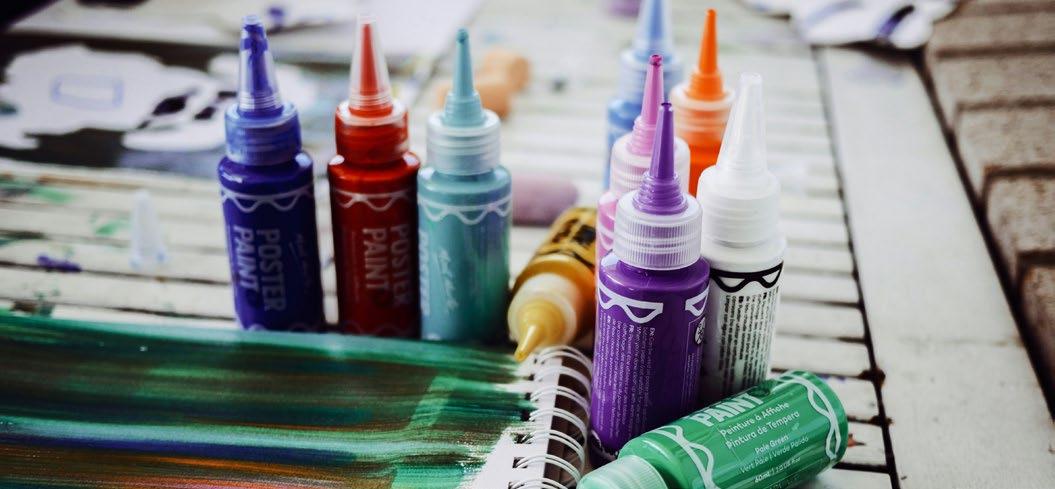

The building blocks of dance. They include: Action, Space, Time and Dynamics. These elements help us create, perform, and understand dance.
The movements we do in dance. These can be steps, gestures, jumps, turns, or any movement that shows an idea or feeling.
The quality or feeling of movement. Examples:
• Sustained – smooth and slow (like in yoga)
• Percussive – sharp and strong (like flamenco)
• Suspended – hanging in the air (like holding a balance)
• Swinging – moving back and forth (like a pendulum)
• Collapsed – falling or giving in (like melting to the ground)
• Vibratory – shaking or wiggling
Where we dance. This includes:
• Levels (high, medium, low)
• Shapes (straight, curved, twisted)
• Directions (forward, backward, sideways)
• Pathways (the floor patterns dancers make when moving)
• Personal space (the space around your body)
• General space (the whole performance area)
Time
How we move to the beat. This includes:
• Tempo (fast or slow)
• Rhythm (patterns of movement, regular or irregular)
• Accent (when we make one movement stand out)
• Stillness (pausing or waiting)
• Phrasing (organising movement into groups or “sentences” of counts)
Choreography
The art of creating dance. Choreography is when someone makes and organises the movements to tell a story or express an idea.
Counts
How dancers keep track of the music.
• Music is usually grouped in 8 counts (1–8).
• One set of 8 counts is like a sentence.
• Dancers use counts to stay in time with the music and with each other.
Kinesthetic response
Being aware of how our body feels when moving. It helps dancers’ sense, control, and adjust their movements to stay balanced, safe, and expressive.
Locomotor & non-locomotor movement
• Locomotor movements – travelling actions like walking, running, skipping, sliding, hopping, or jumping.
• Non-locomotor movements – movements that stay on the spot, like bending, stretching, twisting, turning, or swaying.
A short sequence of dance movements (like a sentence in writing). Phrases can be put together to build a whole dance.
Stimulus
The starting idea for a dance. A stimulus can be music, a picture, a word, a story, or even an emotion that inspires movement.
Safe dance practice
Looking after our bodies while dancing. This means:
• Warming up and cooling down
• Using safe technique
• Dancing in a safe space
• Knowing your own limits. Safe practice helps prevent injuries and keeps us healthy.
Further research sources
www.spiritgallery.com.au/yidaki-information www.qcaa.qld.edu.au/about/k-12-policies/aboriginal-torres-strait-islander-perspectives/resources/storytelling www.kalkadoonpbc.com.au/about-us/who-we-are
